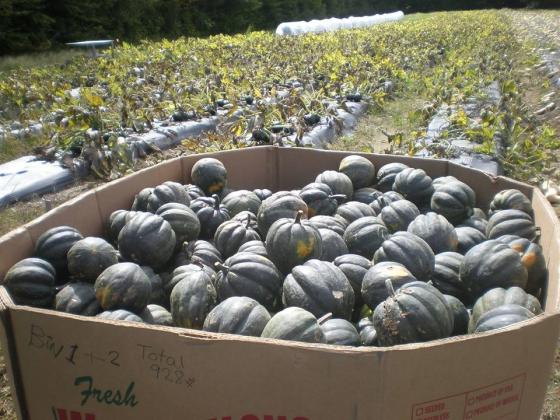Posted January 13, 2016 at 05:30am by Marcella Houghton
Farm food loss study likely to show opportunity to dramatically increase local food consumption

Salvation Farms, a non-profit dedicated to managing Vermont’s farm surplus, is conducting a study to determine how much food is lost annually on Vermont farms. Rough estimates indicate that millions of pounds of crops never leave the farm due to market conditions, labor shortages and unpredictable environmental factors, but there is no official number of how much quality food is lost each year. With Vermont’s 14% food insecurity rate and millions of pounds of produce being shipped in from out of state for emergency and institutional meal programs, the study is expected to show that the state has options to address these nutritional demands with locally grown foods while building resilience in our agricultural system and regional supply chain.
Starting this month, Salvation Farms is working with researcher Elana Dean to conduct interviews and focus groups as well as administer surveys to produce farmers from around the state. Dean works with Isgood Community Research, LLC, to provide monitoring & evaluation services to organizations with social missions - in Vermont and around the U.S. In addition to quantifying surplus, Salvation Farms seeks to learn what farmers prefer when it comes to managing their un-marketed crops, how they’d like to benefit from efforts to move their food into their communities, and how services designed to keep their harvest from being a lost resource currently impact their farm businesses.
Salvation Farms is a member of the Vermont Gleaning Collective, a network of professionally organized, community-based gleaning programs from around Vermont. Last year, Vermont Gleaning Collective volunteers captured over 220,000 pounds of quality surplus crops from 90 farms. These crops would have never left the farm but were instead distributed to community-based food programs. Salvation Farms believes that this research will likely demonstrate this volume is a small fraction of what is left on farms.
“This is quality food, not even always ‘ugly.’ Sometimes farms miss their market, but they didn’t grow the crop to till-in - they grew it to feed people, to feed their community. This study will draw attention to the fact that, as a state, we need to do more to manage our valuable food resources, and those resources invested in growing food. The food is there. We are working hard to obtain the evidence of how much is truly lost to our communities,” says Salvation Farms’ Executive Director, Theresa Snow.
The research will inform and advance Salvation Farm’s work to improve access to local food, one of the three primary goals of the Farm-to-Plate Strategic Plan initiated by the Vermont Legislature in 2009. It will also help Salvation Farms work with its partners, the state’s legislative body, and the philanthropic community to ensure that managing farm surplus foods is a part of Vermont’s way of life and a priority in our regional food system development.
